“Art collecting is not about an investment or decorating apartments but rather a great adventure which is available for anybody who has an idea….” art collectors duo – Krzysztof Masiewicz and Piotr Bazylko talk about their blog, collections and ArtBazaar Records.
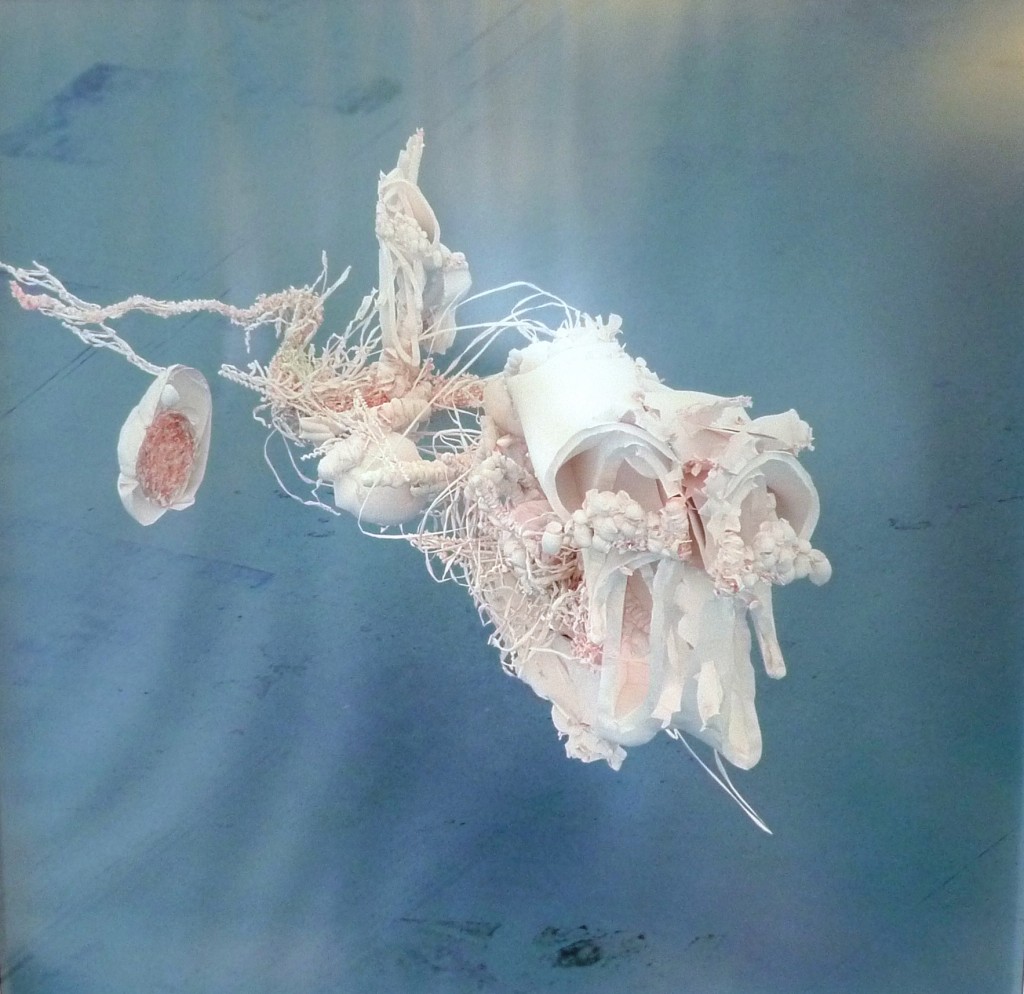
Norman Leto, Portrait of Piotra Bazylko, 2010, photograph generated from a computer program analyzing curriculum vitae, 60×60 cm, courtesy Piotr Bazylko
Contemporary Lynx: Both of you have jobs which are not strictly connected with art. So how was born the idea of creating a blog which, for many people, has become a guidebook in Polish modern art.
Krzysztof Masiewicz: We have met while recollecting works during charity auction about 9 years ago. It was a pure coincidence. If Piotr didn’t talk to me back then, ArtBazaar would not exist now. This whole story is described in our book “77 art pieces with history.” The blog is a result of our later conversations and desire to create something we both looked for – a place where people can find out more about Polish modern art, read interviews with young artists, see what can be found in studios of Academy of Fine Arts or simply to read about art market. Back then it was not to be find neither on the Internet nor in newspapers. We also wanted to share our experience as collectors systematically, what and why we buy. At the beginning we wanted to appear under pseudonyms such as: Sergeant Basil and Colonel Dowgird which made many people angry as they thought it to be some kind of market manipulation. However, when we revealed ourselves, the consternation was even bigger, because we were outsiders, known only by gallery owners. There were even some doubts do we have a right to write about the art and art market if we are not from this branch.
CL: Was there a moment when running the blog, you realized that you have a power to influence people’s opinions?
Piotr Bazylko: For a very long time we weren’t aware of that. But I think that the turning point was publishing a book “Contemporary collectors’ guidebook” at the end of 2008. During a meeting with readers in Cracow a space was full, discussion very passionate which finished long after scheduled ending. It was also back then when we were attacked by an academic society that a way we talk about art is too simple, that we treat collecting art as an adventure rather than sacredness, and that we pay too much attention to the art market. Today these allegations seem to be funny but it shows how many things in Poland have changed.

Zbigniew Rogalski, courtesy Krzysztof Masiewicz
CL: Your activity has evaluated for many years. You started as bloggers who shown an interesting events, artists with many perspectives and you were also giving some advice to people who were at the beginning of their art collection journey. Today ArtBazaar is one of the most interesting blogs about the art. In the meantime you have created ArtBazaar records, you launch limited editions of CDs and cassettes, publish catalogues, organize exhibitions, present limited series of works. How do you see your role/place in Polish art world?
PB: Somebody one day described what we do as “committed collecting.” It is about not only collecting art for your own pleasure but also about giving something in return to other people. We don’t have such funds to open our own studios, as for example Anita Zabludowicz in London, we neither can’t create such space as Grażyna Kulczyk did in Poznań. However, we do what we can and what interests us. It is still a little chaotic but I thing that this is the charm of what we do. Sometimes even we don’t know what our next project will be….
KM: We would like that the things we do were inspiring, to show that art collecting is not about an investment or decorating apartments but rather a great adventure which is available for anybody who has an idea for the future and for own collection.
CL: You form a perfect duet for many years. So how does your shared work look like? Either on creating the blog or other artistic projects?
PB: Normally. We talk a lot with each other, sometimes a few times a day, and we write a lot. On the one hand we are interested in the same things, but when it comes to details we usually choose different pieces of the same artist. We also have a feeling that our common work, except of being a great adventure, enriches us. Because of it we open our eyes on art which could have been unnoticed. I am really glad that ArtBazaar exists for 7 years now. It is worth to mention that during this time we published almost 1500 texts on our website. So it is easy to notice that we work with each other for quite some time.
KM: We also both have an awareness that this is a team work, who has time is doing a project or running the blog. When someone don’t have time then there is still a certainty that the other person will take care of it. When none of us has time it isn’t a tragedy. It is still our hobby, an important one, but just a hobby.
CL: What are your plans? What are ArtBazaar’s directions?
KM: We don’t have any specific plans that in a few years from now we would like to be in some particular place or achieve a particular goal. However, on the basis of our experience we can notice that our involvement in writing a blog everyday is decreasing. On one hand this is a result of the fact that other blogs or websites offer much more – we don’t have to write about everything because others do it better or get some materials faster so there is no point in writing about the same thing twice. We also have a feeling that not so much is going on in the art as it was 5, 10 years ago, when this was the time of such an explosion of artistic talents, establishing new cultural institutions, creating of institutional collections. Collecting is also about generations. Our generation of artists is now becoming adults, the same as our collections. There is a stabilization. However, we are sure that we would like to devote more energy to our project “We record the sounds of Polish art” which is ArtBazaar Records. We both think that this is very meaningful and unique element of Polish modern art which is surprisingly unnoticeable on a wider range.
PB: Yes. ArtBazaar Records is our beloved child. For me really this is a mystery why it didn’t meet with a better reception of the society. But I’ve heard that editors of Alma Art records also faced sale difficulties and today these are unique. This is why I hope so that time also will be a blessing for ArtBazaar Records.
CL: In 2008 you published “Contemporary collectors’ guidebook.” Where this idea was born from? Was it about the things that you were not sure about at the beginning? Did you notice a necessity to explain and guide people through the art?
PB: It was definitely about the things which interested us and we felt that this knowledge, presented to Polish collectors or future collectors in a simple way is somehow missing. An idea was born due to inspiration of Bogna Świątkowska, the boss of influential Bęc Zmiana Fundation. She invited us to prepare a bilingual edition of “Notes” concerning contemporary art market. For Polish people it was suppose to be a beginning of collecting and for foreign collectors an introduction to Polish art. A success of “Notes” resulted in that Bogna offered us writing a book, which was published due to support of ING Group.
CL: If you published this guidebook now, would it be different than the first edition?
PB: This is an interesting question. We would like to write a new version of Guidebook five years later but we haven’t found a publisher yet
KM: Our experience is now significantly bigger than when we were writing the Guidebook. We have experienced some kind of stability or collection essence which are states that we didn’t know before. We are able to look on some processes from a different perspective.
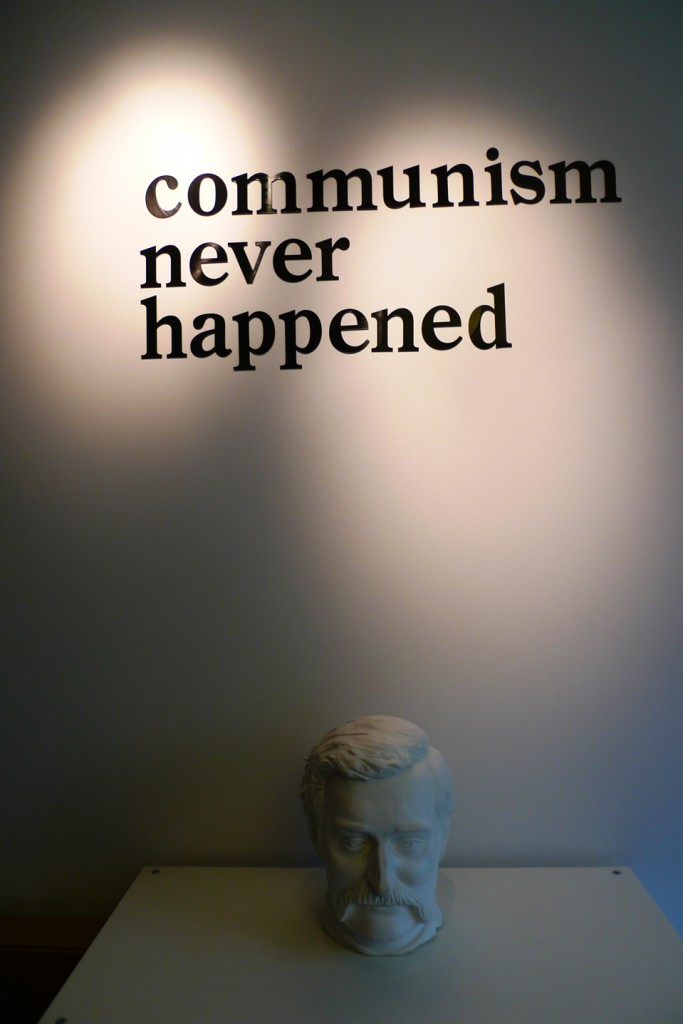
Ciprian Muresan, Communism Never Happened, 2007, subtitles from vinyl, with propaganda music from the 80s. ed. 3_ Grzegorz Klaman, Study of Lech Walesa, 2010, plaster, ed.5, courtesy Piotr Bazylko
CL: What should be the direction of a person who would like to start collecting the newest Polish art?
PB: Why Polish in particular? Maybe we should not limit ourselves only to Polish art? Maybe it could be this of Central and Eastern Europe? I can speak from a perspective of a collector who is wealthy, as for Polish standards, but not rich. I think that a majority of Polish collectors has the same financial situation. So you have to be very brave and fast – to be one step or even two ahead of others. Only then we will have a choice and we will be able to buy interesting works for a reasonable price. Of course we can’t “shot in the darkness” – you need knowledge and need to have your finger on the pulse: visiting exhibitions, contact with gallery owners, visit studios. And reading, searching on the Internet. It is important to listen as many advisors as possible, and not limit to one, even the best one.
CL: In your opinion who collects art today in Poland? On what kind of art contemporary collectors are focused on?
PB: I am surprised how “Polish” are Polish collectors. How they limit themselves only to Polish art. Maybe it is a result of that galleries in Poland almost always represent Polish artists? Second thing which shocks me, is the fact of collectors being so conservative – how difficult is to convince many of them to buy anything other than paintings. Even buying a drawing may be hard. But this is also changing and I hope that more and more collectors will make brave and unconventional decisions.
CL: What is the most doubtful thing for those who would like to start collecting art?
KM: The most difficult is probably to make a first step, to buy first work. It is hard to break a barrier of “reason” and for more or less money buy something as unnecessary as painting. We can also add to it some doubts whether we really like this painting, if it is not infantile, bad or trashy and can we trust our own taste?
PB: It is important to believe in yourself and don’t be afraid. Sometimes it is hard because the world of the contemporary art seems to be conceited, focused on itself and inaccessible from the outside. And in reality it is not like that and we try to show it since many years. Later on it is only getting easier.
CL: What are the difficulties connected with buying works in Poland? Do you think that when living abroad it is easy to buy the contemporary art from Poland?
PB: I think it was never easier than it is now. There is a website www.artvolver.com, where you can buy a great Polish art. There was even established a society of Warsaw galleries which organize Warsaw Gallery Weekend. And finally when Stereo Gallery will move to Warsaw (it will happen in September) then all significant commercial contemporary art galleries will be present in this city. And plane tickets to Warsaw from West Europe cost few Euros.
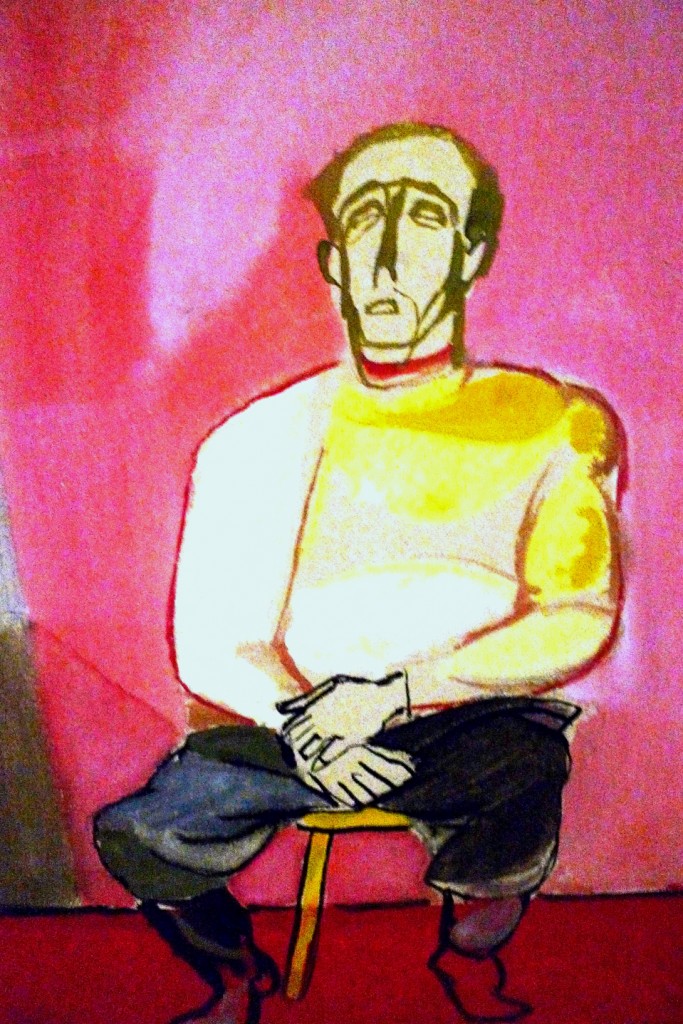
Andrzej Wróblewski, Mężczyzna, 1956, gwasz na płótnie, 42×29 cm, courtesy Piotr Bazylko
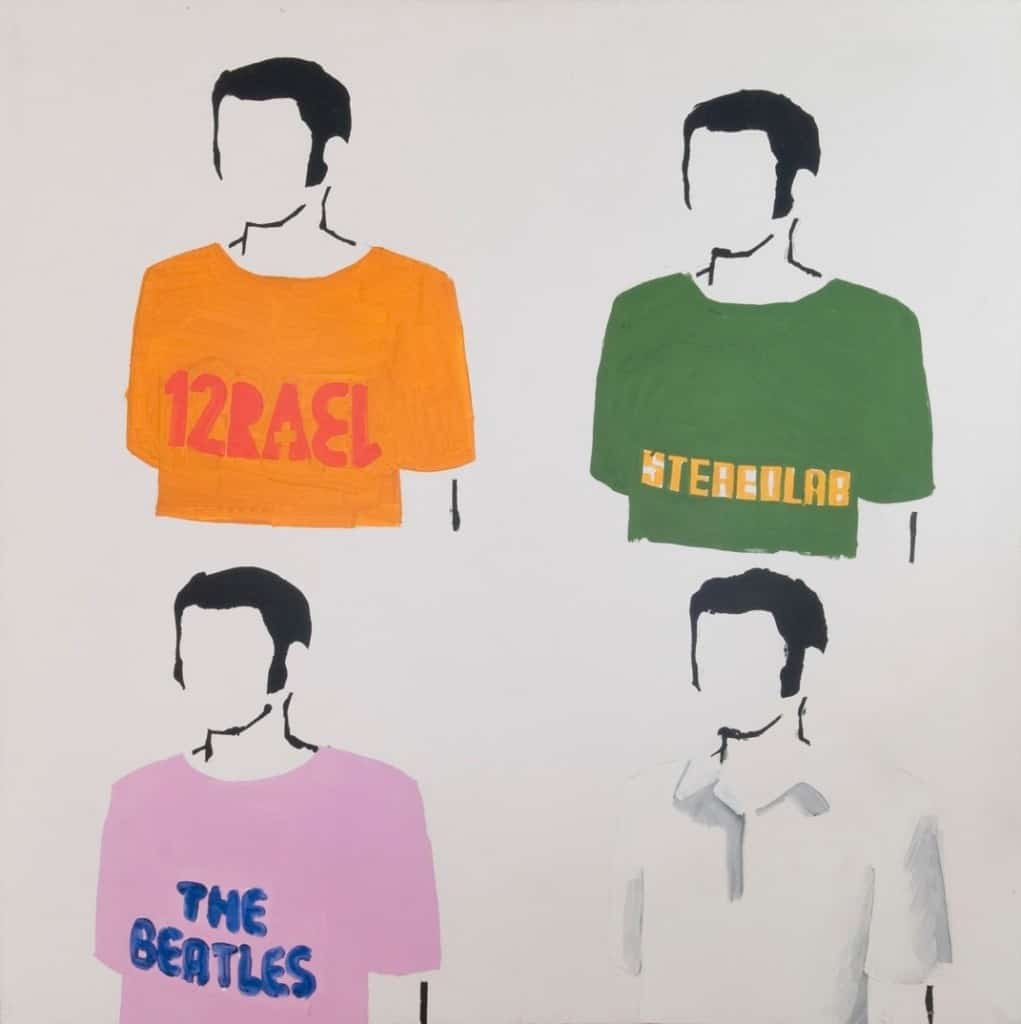
Wilhelm Sasnal, courtesy Krzysztof Masiewicz
CL: You are also collectors. Both of you independently, as first pieces, have chosen works of the Gruppa artists. It is strictly connected with your passion for works of their “pioneer” Andrzej Wróblewski and their “successors” which are artists from previous group “Ładnie.” You often write that aware collecting is about giving a character to your collection, some king of base and main theme. Could you please describe your collections? Are your above mentioned passions reflected in your collections?
PB: Yes they are. Our complicated history of 20th and 21st century is one of the themes of my collections. This is why I am interested in works of Wróblewski, Gruppa artists or “Ładnie” Group. Second theme are music fragments, connections between visual arts and music. I have succeeded in having a mini collection on that topic – both paintings, photographs and objects or films of such artists as: Wojciech Bąkowski, Christian Marclay, Szymon Kobylarz, Jonathan Monk, Zbigniew Rogalski, Laurie Anderson, Paweł Książek, Ciprian Muresan, Adam Witkowski and many others. Another theme is self-portraits. This part of collection we once presented with Krzysztof Masiewicz’ s one at the exhibition “Portret własny” in Ujazdowski Castle in 2008. And at the end maybe not so much a theme but rather a group of artists which can be shortly described as “tired of reality” or new surrealists. I managed to create an interesting, in my opinion of course, collection of works of Jakub Julian Ziółkowski, Tomek Kowalski, Paweł Śliwiński, Tymek Borowski, Piotr Janas, Mateusz Szczypiński, Paweł Dunal or Michał Chudzicki. My latest pieces of this part of collection are paintings and drawings of Ewa Juszkiewicz and I am really pleased with these.
KM: My collection, from historical point of view, is based on this line Wróblewski – Gruppa – Ładnie – Penerstwo. This is a main road with variety and surprising side roads. The most important for me is Andrzej Wróblewski but except of his work I have many graphics of his mother Krystyna Wróblewska which led me to the interest in pre-war graphic of artists living in Wilno and from this, purely accidentally, was created a quite interesting separate collection. Just like Piotrek, a separate theme of my collection is a mirage of music and art. Here I have great works of Konrad Smoleński, Wojtek Bąkowski, Paweł Książek, Tomek Kowalski, Kuba Dąbrowski or Czesław Niemen. A separate sub-collection of music theme is KOT group and its publishing, tidbits and documentation. I am also interested in theme of sacrum in art and here I own works of Andrzej Wróblewski, Ryszard Woźniak, Rafał Bujnowski or Mateusz Szczypiński. I have also a meaningful collection of original comics art which in many places is a complement to my favorite themes in art. This part of my collection lately brings me most of joy.
CL: What was the first impulse to start collecting art?
KM: There were many impulses, such as reading a book “My galleries, My painters” by famous art dealer Henry Kahnwailer….
PB: Honestly, I don’t remember this first impulse. For real I have started to collect art after a few-months course in Warsaw School of Photography, which was a birthday gift from my wife. I haven’t become a better photograph after this course but I have started to collect photography which later on smoothly turned into art.

Jakub Julian Ziółkowski, Untitled, 2011, oil on canvas, 67×64 cm, courtesy Piotr Bazylko
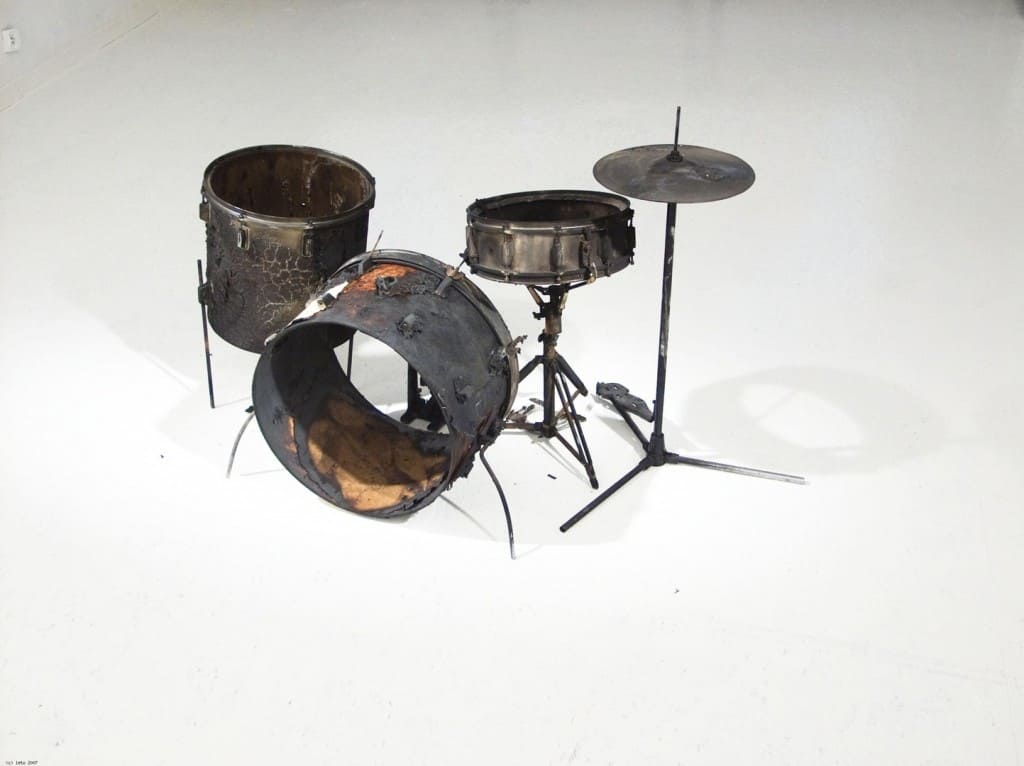
Konrad Smoleński, courtesy Krzysztof Masiewicz
CL: It is said that except art you also collect comics, vinyl records. Do you treat them as completion of your collections or as a separate ones?
KM: For me this is a completion. These additional elements such as china, comics, artistic books, lighting or furniture when combined together create some kind of an atmosphere or themes which we are interested in. As an example I can give you an object from Piotr’s collection and this is a set of tea china which was painted in his famous stripes by Leon Tarasewicz. And this combined with a lamp by Kasia Przezwańska and in the background there will be a painting by Ania Okrasko then we receive a very interesting spatial arrangement. Every one of these elements takes something from the other.
PB: Artist records for me today is a significant part of my collection. I think that probably this part has the most of my attention than any other one. Maybe because of the fact that I have so many records to get. My collection is combined of a few hundreds of records and among theme there are some unique ones such as this of Jeremy Deller (released only in 50 copies) or only one ever released record of Robert Kuśmirowski. Additionally I also collect art pieces which insert a motive of vinyl record, such as those of Haroon Mirza, Milan Kniżak, Marcel Duchamp, Ajit Chauchan, Zbyszek Rogalski, Slavs&Tatars, Rose Eken and many other. In my case this is also not a completion of collection but rather its integral part.
CL: Could you please point out one thing which would be this first step, a stimulating element, a helping hand to fasten a development of the contemporary Polish art?
KM: In my opinion there is no such thing, or maybe I put it differently: all of them which should happened have already happened – artists’ successes, international attention, new exhibition institutions, auction houses, efficient and modern galleries. The newest Polish art is doing fine, it is presented in private and public galleries. Of course it could always be better: institutions could have much more money, the government could promote and support art better, etc. but this would not influence significantly the development of the contemporary Polish art.
Thank you for this conversation.
Interviewed by Dobromila Blaszczyk & Sylwia Krason
Translation: Katarzyna Ujma
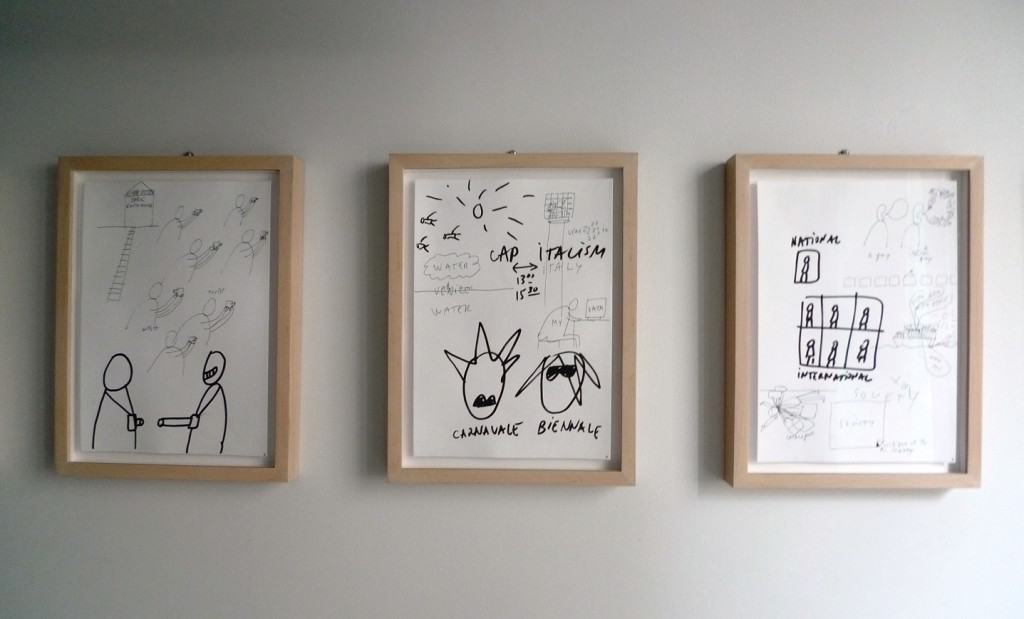
Dan Perjovschi, sketches for the Venice Biennale 2009_ marker and fineliner on paper, 5 drawings, courtesy Piotr Bazylko













